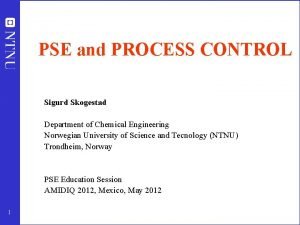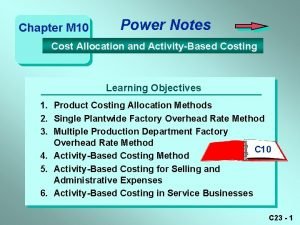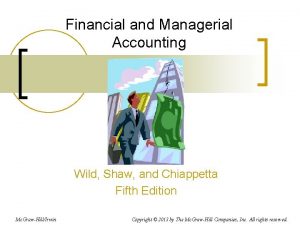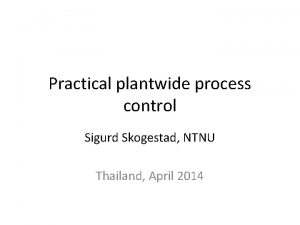Practical plantwide process control Extra Sigurd Skogestad NTNU



- Slides: 3

Practical plantwide process control. Extra Sigurd Skogestad, NTNU Thailand, April 2014 1

Skogestad economic plantwide control structure design procedure I Top Down • Step S 1: Define operational objectives (optimal operation) – Cost function J (to be minimized) – Operational constraints • Step S 2 (optimization): (a) Identify degrees of freedom (MVs). (b) Optimize for expected disturbances and find regions of active constraints • Step S 3 (implementation): Select primary controlled variables c=CV 1 (CVs) CV 1 (Decision 1). • Step S 4: Where set the production rate? (Inventory control) (Decision 3) II Bottom Up • Step S 5: Regulatory / stabilizing control (PID layer) – What more to control (CV 2; local CVs)? y (Decision 2) – Pairing of inputs and outputs y (Decision 4) – Step S 6: Supervisory control (MPC layer) • Step S 7: Real-time optimization (Do we need it? ) Important part of this procedure: “Put economics into basic control layer”!! 2 CV 2 MVs Process

Comment: Luyben procedure • • • Step L 1. Establish control objectives Step L 2. Determine control degrees of freedom Step L 3. Establish energy management system Step L 4. Set the production rate (Decision 3) Step L 5. Control product quality and handle safety, environmental and operational constraints Step L 6. Fix a flow in every recycle loop and control inventories Step L 7. Check component balances Step L 8. Control individual unit operations Step L 9. Optimize economics and improve dynamic controllability Notes: • “Establish control objectives” in step L 1 does not lead directly to the choice of controlled variables (Decisions 1 and 2). Thus, in Luyben’s procedure, Decisions 1, 2 and 4 are not explicit, but are included implicitly in most of the steps. • Even though the procedure is systematic, it is still heuristic and ad hoc in the sense that it is not clear how the authors arrived at the steps or their order. • A major weakness is that the procedure does not include economics, except as an afterthought in step L 9. 3





